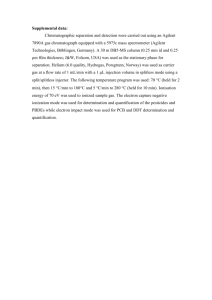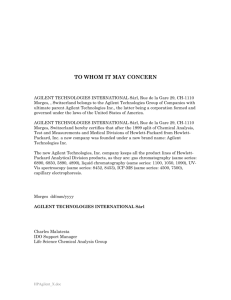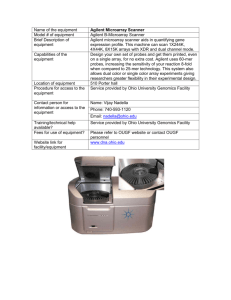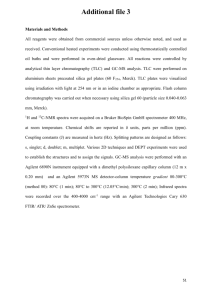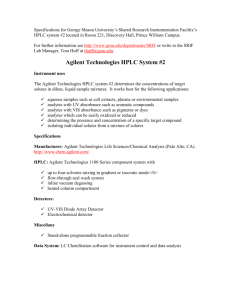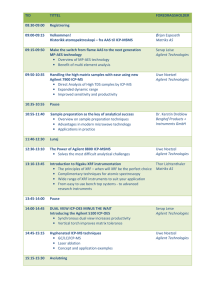Details of chemical analyses - Proceedings of the Royal Society B
advertisement
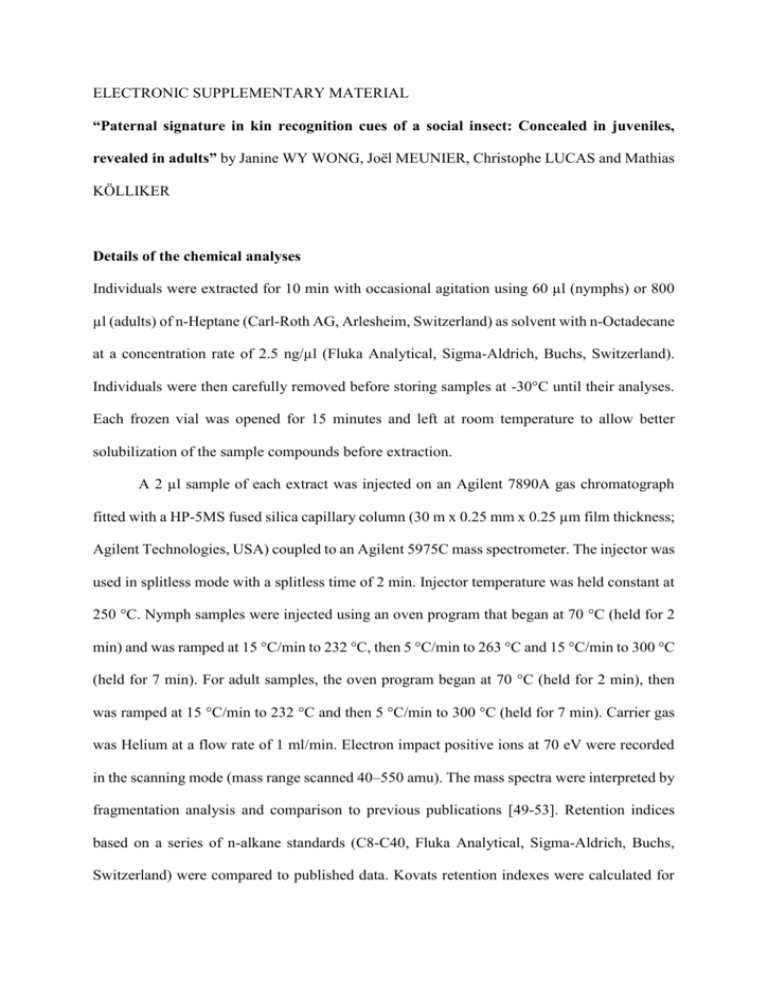
ELECTRONIC SUPPLEMENTARY MATERIAL “Paternal signature in kin recognition cues of a social insect: Concealed in juveniles, revealed in adults” by Janine WY WONG, Joël MEUNIER, Christophe LUCAS and Mathias KÖLLIKER Details of the chemical analyses Individuals were extracted for 10 min with occasional agitation using 60 µl (nymphs) or 800 µl (adults) of n-Heptane (Carl-Roth AG, Arlesheim, Switzerland) as solvent with n-Octadecane at a concentration rate of 2.5 ng/µl (Fluka Analytical, Sigma-Aldrich, Buchs, Switzerland). Individuals were then carefully removed before storing samples at -30°C until their analyses. Each frozen vial was opened for 15 minutes and left at room temperature to allow better solubilization of the sample compounds before extraction. A 2 µl sample of each extract was injected on an Agilent 7890A gas chromatograph fitted with a HP-5MS fused silica capillary column (30 m x 0.25 mm x 0.25 µm film thickness; Agilent Technologies, USA) coupled to an Agilent 5975C mass spectrometer. The injector was used in splitless mode with a splitless time of 2 min. Injector temperature was held constant at 250 °C. Nymph samples were injected using an oven program that began at 70 °C (held for 2 min) and was ramped at 15 °C/min to 232 °C, then 5 °C/min to 263 °C and 15 °C/min to 300 °C (held for 7 min). For adult samples, the oven program began at 70 °C (held for 2 min), then was ramped at 15 °C/min to 232 °C and then 5 °C/min to 300 °C (held for 7 min). Carrier gas was Helium at a flow rate of 1 ml/min. Electron impact positive ions at 70 eV were recorded in the scanning mode (mass range scanned 40–550 amu). The mass spectra were interpreted by fragmentation analysis and comparison to previous publications [49-53]. Retention indices based on a series of n-alkane standards (C8-C40, Fluka Analytical, Sigma-Aldrich, Buchs, Switzerland) were compared to published data. Kovats retention indexes were calculated for both adults and nymphs according to the dedicated formula [50]. MSD ChemStation E02.00.493 software (Agilent Technologies) was used to calculate the retention time and total area of each peak for subsequent analyses.
